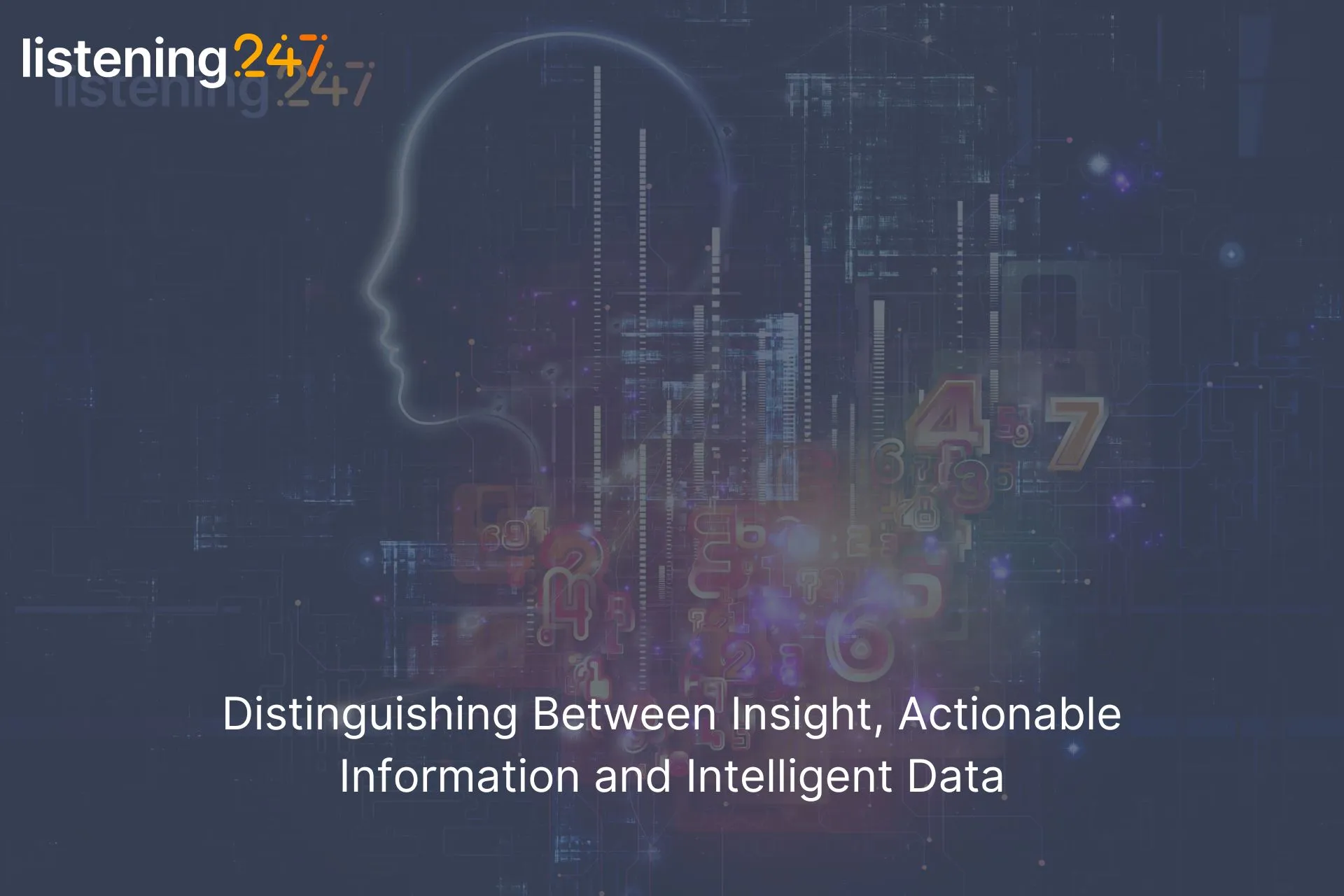
Michalis A. Michael
December 10, 2021
In a data-saturated world, the ‘DIKW pyramid,’ which ranks data, information, knowledge, and wisdom, has become a crucial framework for business leaders seeking to add value at each level.
Insight is the highest form of understanding, going beyond data and information to drive strategic, proactive business decisions.
In a data-driven world, the 'DIKW pyramid'—with its levels of data, information, knowledge, and wisdom—has long been a cornerstone of business intelligence. However, in the realm of social intelligence, this model is evolving, replacing 'wisdom' with 'insight,' a term often misused and misunderstood in the industry.
In a data-saturated world, the ‘DIKW pyramid’—which ranks data, information, knowledge, and wisdom—has become a crucial framework for business leaders seeking to add value at each level. However, in the realm of social intelligence, this model is evolving to place 'insight' at the pinnacle instead of wisdom. The term 'insight' is often misused, sometimes being equated with mere information or knowledge, which can dilute its true meaning and significance.

Fig 1. DIKW pyramid
To clarify, insight should be viewed as the apex of our revised pyramid, transcending both intelligent data and actionable information. While intelligent data and actionable information are essential, insight represents a deeper understanding that combines various data sources with intuition to deliver strategic value. Recognizing this distinction helps businesses leverage their data more effectively, ensuring that they are not just reacting to information but proactively using insights to drive long-term success.
Intelligent data and how it’s used
Insight is often derived from data, but it is crucial to differentiate between raw data, intelligent data, and true insight. While adding intelligence to raw data—through annotation and quantification—enhances its value, this does not automatically translate to insight. Intelligent data, though useful, merely provides a more refined view of the raw information.
In the realm of big data, which encompasses vast datasets measured in gigabytes and exabytes, the process of adding intelligence through machine learning can yield actionable information. This includes annotating data with sentiment, emotions, and topics. However, while this can offer valuable information, it still falls short of the deeper, strategic understanding that constitutes genuine insight.
What does actionable information look like?
As we progress up the knowledge pyramid, it's clear that actionable information and true insight are often confused. While actionable information involves identifying and addressing specific issues—such as a customer pain point uncovered through various data sources like tweets or reviews—this type of information is typically used for immediate problem-solving and short-term improvements.
True insight, however, goes beyond merely reacting to identified issues. It involves a deeper understanding that informs long-term strategy and drives proactive decision-making. For instance, while solving a customer pain point is valuable, insight requires synthesizing data to predict future trends and shape strategic direction, offering a more profound and strategic advantage.
What is insight?
At the pinnacle of the knowledge pyramid, business insight is defined as a 'gold nugget' that emerges from synthesizing information across multiple sources and applying a measure of intuition. Unlike simple data points or actionable information, which can be derived from single sources or immediate problem-solving efforts, insight is strategic and requires a long-term approach to implement effectively. It involves a deeper level of understanding that leads to proactive decision-making and can drive substantial positive outcomes for a business.
This distinction highlights why insight is positioned above intelligent data and actionable information in the pyramid. While intelligent data and actionable information are crucial for addressing specific issues and reacting to opportunities, insight goes further by enabling predictive strategies and long-term success. Recognizing this hierarchy underscores the importance of not only collecting and analyzing data but also transforming it into meaningful insights, which remains a rare and highly valuable skill in today’s business landscape.
Conclusion
Insight, while emerging from data and actionable information, represents a higher echelon of strategic value. It transcends mere data analysis to offer predictive and proactive benefits, making it a rare and valuable asset at the peak of our pyramid. Understanding this distinction helps businesses leverage data effectively and grasp the true power of insightful analysis.

Original Source: Information Age








